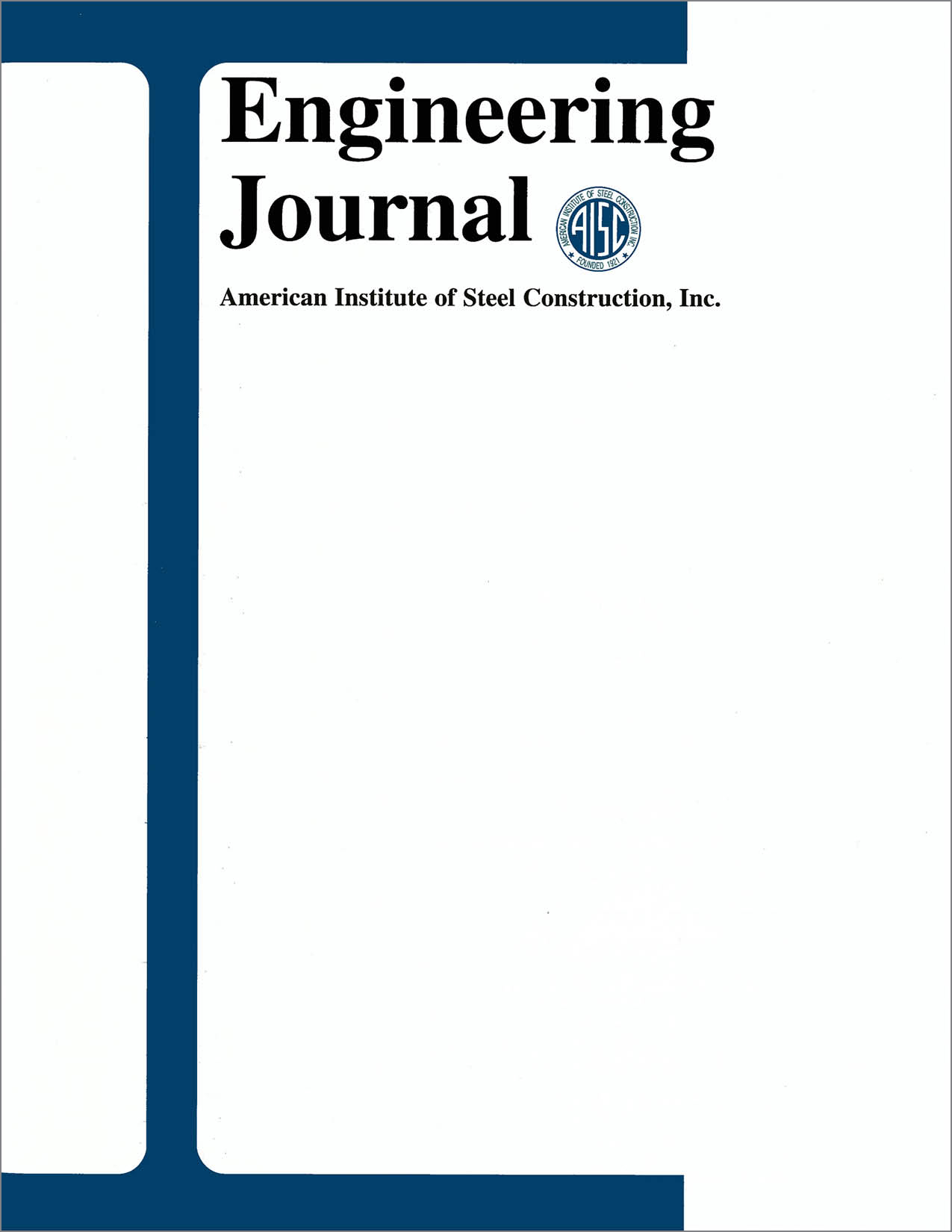Block Shear and Net Section Capacities of Structural Tees in Tension: Test Results and Code Implications
DOI:
https://doi.org/10.62913/engj.v39i4.786Abstract
Structural tees in tension, bolted to connections only through the flanges, are subject to shear lag. Previous research has shown that shear lag, a reflection of connection length, overall length and the eccentricity to the centroid, strongly influence the efficiency of such connections. This paper reports the results of 50 tests of structural tees. Varying the eccentricity and the connection length produced failures that transitioned from net section to block shear. The tests show that as connection lengths decrease or eccentricities increase, or both, the efficiency of the connections decreases. For net section failures, the decrease is more pronounced than predicted by current AISC specifications provisions that account for eccentricity and connection length. Although not accounted for by current AISC specifications, eccentricity is also shown to influence block shear capacity. The primary purposes of this paper are to present test results and possible alternative approaches to dealing with the areas of tension connection efficiency and shear lag.

